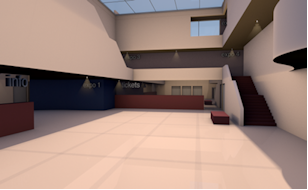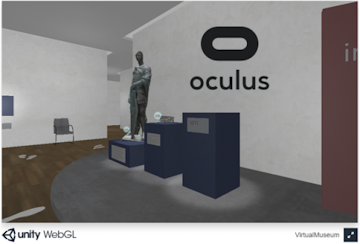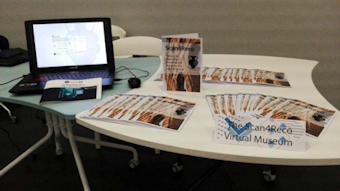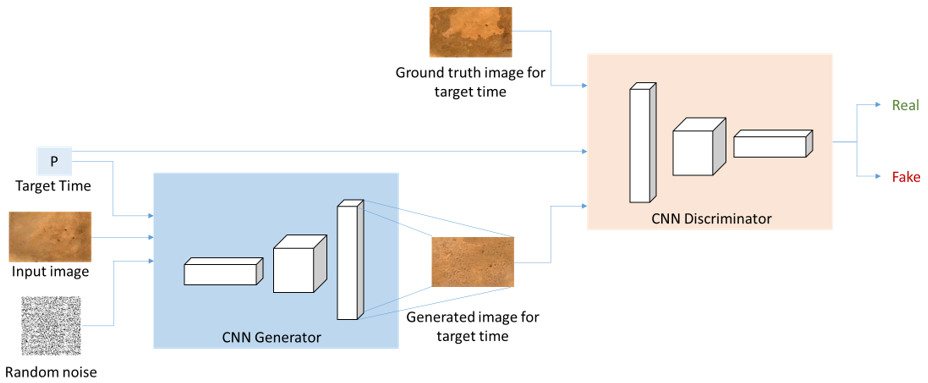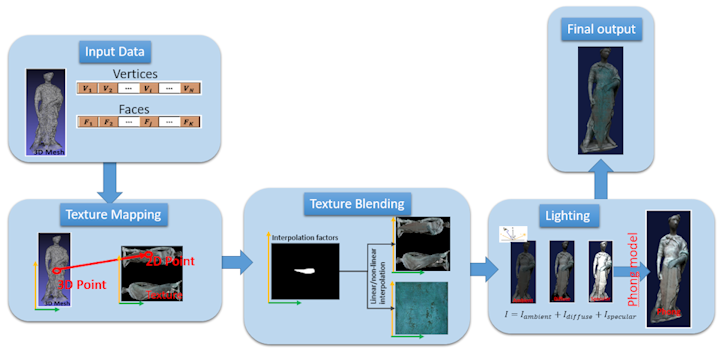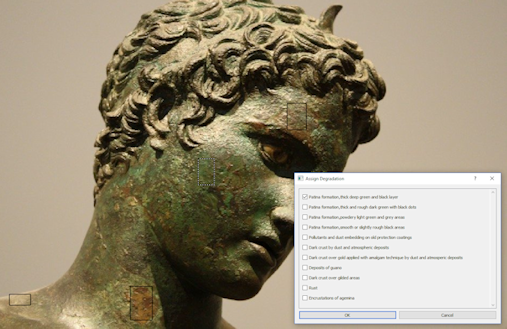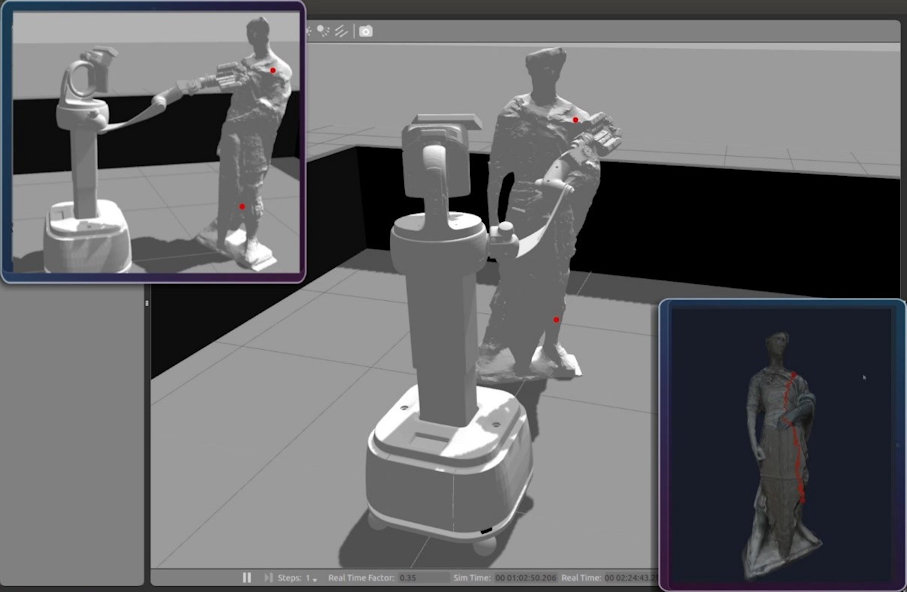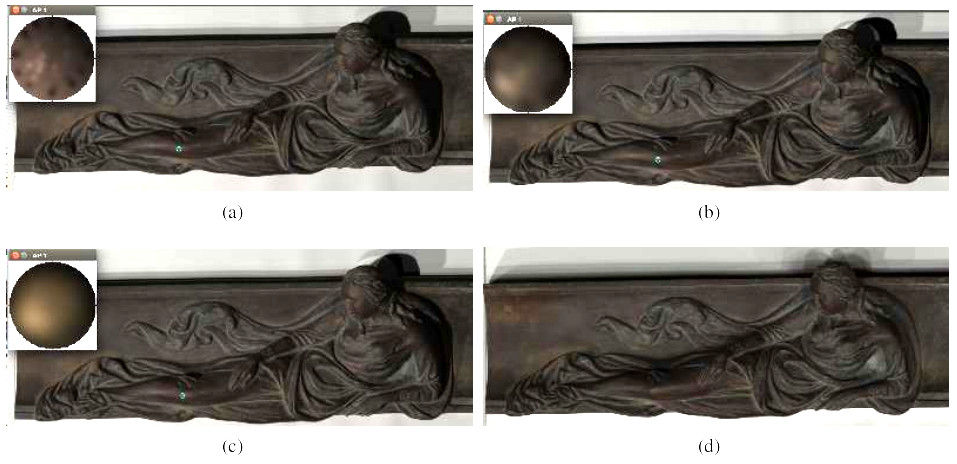|
Automated High-Accuracy Modelling using 3D Photogrammetry
One of the main components of the Scan4Reco system is the 3D scanning of the object geometry. It serves as a pre-requisite for being able to visualize together multiple results from a variety of surface and penetrating scanning of small parts of the object. Object geometry serves also as a reference for simulated prediction of future degradations of the object over prolonged periods of time. Such changes involve both physical erosion of the surface as well as chemical changes that affect the steadiness of the object surface and give raise to speeding up of the object deterioration. Since such changes occur very slowly, having a very accurate and high-resolution 3D object representation is even more important.
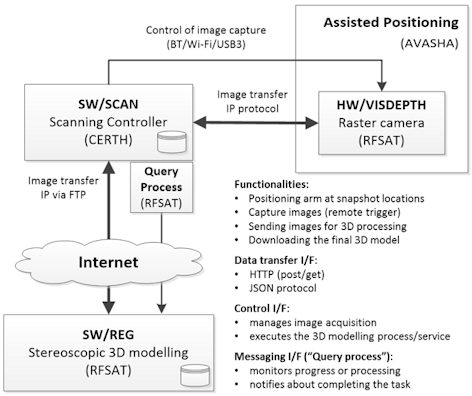
Photogrammetry as a technology of making depth measurements from raster photographs, has been used since the birth of modern photography in fields such as topo-graphical mapping, architecture and archaeology. It is also ideal way to obtain 3D information in situations where it is not possible to use other 3D scanners, e.g. in inaccessible locations, due to extreme sizes etc. It is ideal for the recording of translucent surfaces like alabaster and marble. Due to the composite nature of the image capture, color and form can be extracted from the data. Until recently achieving highest resolution recording of surface for facsimile production and featureless, reflective and dark surfaces was not feasible. With recent software developments (e.g. by Pix4D Mapper, Autodesk ReMake and many other ones) it became possible through improvements to photogrammetry technology to become soon the dominant method for recording at risk cultural heritage in 3D and color.
The photogrammetric 3D modelling provides not only the precise representation of the object geometry, but offers also a reference for positioning partial scans from other modalities. It also captures the object condition at a time that can be then aged artificially through digital simulation. The 3D modelling provided by RFSAT uses up to 50MPixel raster images taken with high-overlap on a precisely-controlled grid using robotioc techniques, thus providing high number of matching features among many images. The precise positioning and orientation of the camera in three dimensions (repeatable to single centimeters) is achieved by using a computer controlled mechanical arm. Images are then processed either locally (rough model only, due to a limited computational power of the rack PC) and/or using remote processing server where it can take advantage of the high processing power boosted by CUDA cores of the multiple Nvidia GTX 1080TI graphics cards.

A number of 3D models produced by RFSAT, including those specifically made for SCAN4RECO and otehr research projects funded by European Commission through FP7, COST and Horizon'2020 programs, can be previewed in detail with a Gallery3D virtual reality application by RFSAT built using Unreal 4.18 engine.
Reference Publications:
- Artur Krukowski and Emmanouela Vogiatzaki, High Resolution 3D Modelling of Cultural Heritage, 12th International Conference on non-destructive investigations and microanalysis for the diagnostics and conservation of cultural and environmental heritage (ART’17), Politecnico di Torino, 22-24th of November 2017, Torino, Italy.

- Krukowski Artur and Emmanouela Vogiatzaki, User Interfaces and 3D Environment Scanning for Game-Based Training in Mixed-Reality Spaces, 6th EAI International Conference (ArtsIT’2017), Interactivity and Game Creation , 30-31st of October 2017, Heraklion, Greece.

- Artur Krukowski and Emmanouela Vogiatzaki, UAV-based photogrammetric 3D modelling and surveillance of forest wildfires, Workshop on “UAV & SAR: using drones in rescue operations”, ISA, Rome (Italy), 29th of March 2017

- Krukowski, Artur; Vogiatzaki, Emmanouela, Horizon 2020 “Scan4Reco” Project" Project Overview, E-Space 3rd International Conference Cultural Heritage: Reuse, Remake, Reimagine, Berlin, Germany, 21-22th November 2016 (Session Networking Session of EC-funded Projects),

Open Access Datasets:
- Collection of 3D models of various Cultural Heritage objects produced during evaluation process of diverse 3D photogrammetric algorithms. Those include objects, such as flat Byzantine icons and paintings, as well as Venetian Carnival Masks with complicated shapes. Due to large sizes of original models, only simplified and low-resolution versions are provided here. HIgher-resolution ones are available on request.

|
|


